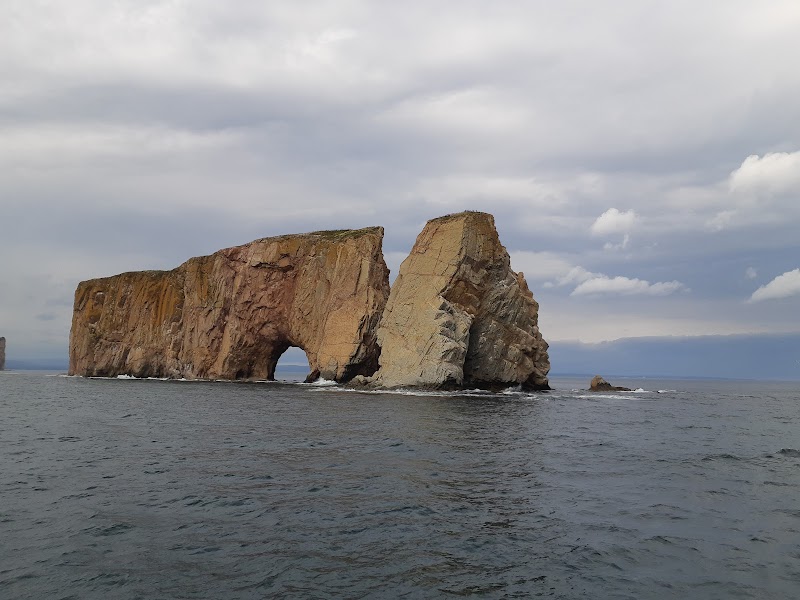In May 2025, Lac Rouge—a small but vital lake in Quebec—vanished nearly overnight after a sudden geological collapse. Captured vividly by satellite imagery, this rare event exposes nature’s unpredictable power and the urgent need to understand shifting landscapes.
Prepare for Unmarked Terrain
Lac Rouge’s surrounding area is remote and largely untouched, with few trails or clear markers. Equip yourself with GPS and detailed maps before setting out.
Respect Local Wildlife Habitats
Moose and sturgeon populations depend on the local ecosystem. Avoid disturbing sensitive areas, especially near shrinking water bodies and wetlands.
Check Weather Forecasts
Rapid weather changes are common. Rain and snowmelt can alter trails and waterways quickly during spring and early summer.
Engage with Cree Cultural Perspectives
The Cree First Nation of Waswanipi have vital connections to this land. Learning about their history and practices enriches your visit and supports respectful travel.
The Overnight Vanishing of Lac Rouge: Quebec’s Mysterious Disappearing Lake
In the remote Lac-Walker region of Sept-Rivières, Quebec, an astonishing natural event unfolded in May 2025. Lac Rouge, a modest but vital 0.86-square-mile freshwater lake deeply linked to the Cree First Nation of Waswanipi, disappeared almost overnight. The discovery began with a washed-out road near the lake, leading investigators—and soon after, satellite satellites—to reveal the lakebed had collapsed, draining the entire lake and leaving behind a barren, brown expanse.
Lac Rouge's rapid vanishing has both stunned local residents and captivated scientists worldwide. This sudden transformation was captured with precise clarity by NASA’s Landsat 9 satellite, which provided side-by-side images showing the lake’s transition from water to dry land between April 29 and May 14, 2025. Field studies confirmed that the lake’s underlying geology shifted, creating new drainage channels directing water into nearby ponds and rivers before reaching Lac Doda, roughly 10 kilometers away.
The disappearance shakes the foundations of what we understand about sudden landscape changes. Though experts remain divided on exact causes, prevailing theories include the impact of recent wildfires weakening soil integrity, heavy rainfall, and accelerating snowmelt, any of which could have triggered the collapse. The 2019 and 2023 wildfires likely compromised the ground beneath the lake, making it vulnerable to such a dramatic event.
For travelers and nature enthusiasts, this unsettled piece of Quebec is a potent reminder of the dynamic forces shaping the Earth beneath our feet. The lake’s importance extends beyond its striking visuals—it's an ecosystem cornerstone supporting moose, sturgeon, and countless other species. The Cree people's deep connection to the lake enriches the narrative, underscoring the human cost and cultural impact.
Visitors planning to explore the Lac-Walker area should prepare for rugged terrain and swift weather changes. While Lac Rouge currently presents as an empty basin, the surrounding forests and waterways offer raw wilderness ready to reveal stories of resilience and change.
Satellite technology like Landsat 9 highlights how modern tools can track and document environmental shifts that once went unnoticed. This event serves as an urgent call to keep observing, understanding, and respecting the fluidity of natural landscapes.
Whether you’re an adventurer, scientist, or thoughtful traveler, Lac Rouge reminds us that nature’s transformations can be as sudden as they are profound. And as we watch this quiet basin hold memories of its watery past, it challenges us to consider the future of wild places worldwide.
Nearby Trips
All Adventures
Boat Charters
Water Activities
Adventures near Sept-Îles
Discover the unique and memorable adventures that make Sept-Îles special.
Frequently Asked Questions
What caused Lac Rouge to drain so suddenly?
Scientists have confirmed a collapse in the lakebed, likely initiated by soil destabilization from prior wildfires coupled with heavy spring rains and snowmelt. However, the precise cause remains under investigation.
How accessible is Lac Rouge for visitors now?
While the lake itself is no longer present, the surrounding lands are accessible but rugged and mostly unmarked. Visitors should be experienced in wilderness navigation and prepared for variable terrain.
Are there any cultural considerations for visiting this area?
Yes. The lake holds significant historical and cultural value for the Cree First Nation of Waswanipi. Visitors are encouraged to learn about the local community and approach the land with respect.
What wildlife can be observed around the dried lakebed?
Moose, sturgeon (in nearby waters), beavers, and various bird species inhabit the region. Early mornings and evenings provide the best chances for wildlife sightings.
Can I expect any organized tours or guided hikes?
Currently, due to the sudden nature of the event and ongoing studies, no official guided tours exist. Local outfitters in Sept-Îles may provide wilderness trips but not specifically focused on Lac Rouge.
What role did satellites play in understanding this event?
NASA’s Landsat 9 satellite provided high-resolution time-lapse images that documented the lake’s disappearance, giving scientists an unprecedented real-time view of such a rapid landscape change.
Recommended Gear
GPS Device or Smartphone with Offline Maps
Navigating unmarked wilderness around Lac Rouge demands reliable location tracking.
Waterproof Hiking Boots
Wet conditions from snowmelt or rain make sturdy, waterproof footwear essential.
Insect Repellent
Mosquitoes and black flies can be intense during warmer months.
Layered Clothing
Prepare for rapidly changing temperatures with moisture-wicking layers and wind protection.
Local Insights
Hidden Gems
- "Small hidden ponds formed downstream from the collapsed lakebed"
- "Stretches of old-growth boreal forest nearby offer peaceful hiking opportunities"
Wildlife
- "Moose populations frequent the surrounding wetlands"
- "Migratory birds stopover in newly emerged wetlands"
- "Sturgeon inhabit connected rivers"
History
"Lac Rouge has been a vital resource and cultural landmark for the Waswanipi Cree community, supporting traditional fishing, hunting, and trapping long before the lake’s sudden collapse."

